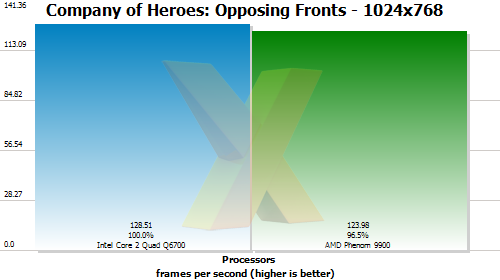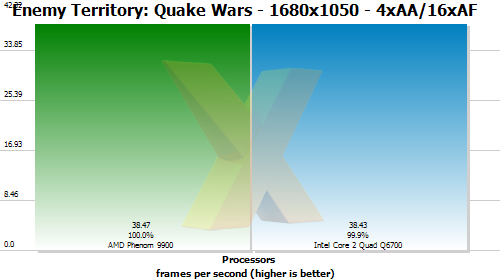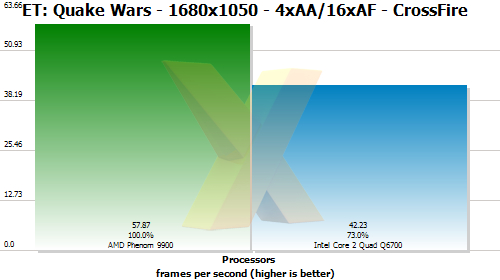Gaming performance, and a look at CrossFire



Our first three gaming results tend to focus on system throughput with a single Radeon HD 3850 card set to rendering. The winner is clear to see.

However, increasing the workload to a graphically-challenging 1680x1050 4xAA/16xAF we see that it's a great leveller, brining near-identical performance for both platforms.

Now here's something interesting. The AMD platform's numbers go up by 50 per cent when run in dual-card CrossFire mode. The Intel numbers go up by around 10 per cent. The cards are the same and the driver, CATALYST 7.11, is identical on both platforms, so why the performance discrepancy when running CrossFire?
One reason lies with the P35 chipset's x4 PCIe 1.0 slot that forms CrossFire. Appreciating the 256MiB frame buffer present on the Radeon HD 3850 cards and understanding that frequent trips back to main memory will need to be made at the tested resolution, we expect there to be a slight performance difference between 2 x x16 PCIe 2.0 on the 790FX and the x16 + x4 PCIe 1.0 on the P35. The difference, though, should be no greater than 10 - 15 per cent, and we find it hard to explain away the remainder of the performance deficit.
We further noted that both systems returned a single-card average frame rate of 97fps when running Quake 4 at 1680x1050 with 4xAA/16xAF. That rose to 124fps in CrossFire mode on the Intel system and 158fps on the AMD-based platform. Again, some of the performance delta can be explained away by how each chipset assigns PCIe lanes, yet it's hard to account for it all.









